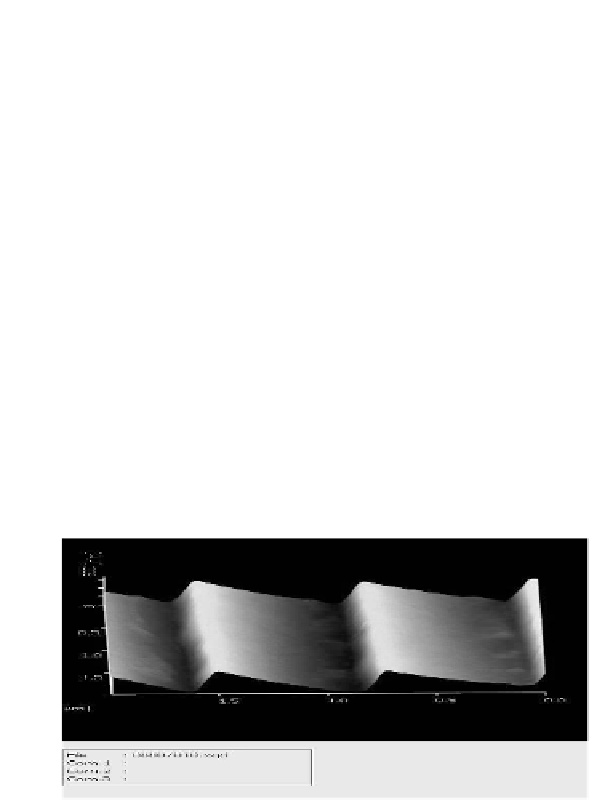Biomedical Engineering Reference
In-Depth Information
been used as waveguide couplers and detectors [13-20]. In the
following, common fabrication methods of diffraction gratings are
discussed.
6.3.1 Diamond Ruling
Diamond ruling, using a carefully shaped diamond tool to
mechanically rule the surfaces of grating substrates, produced the
irst diffraction gratings made for commercial use, and now-a-days
continues to be widely used in producing various types of diffraction
gratings. Due to the ability in controlling the shape of the diamond
tool and thereby the shape of the ruled groves, diamond ruling
enjoys a dominant position as the major method of fabricating blazed
gratings. On the other hand, the linear motion of ruling machines
makes this method be used mostly for producing diffraction gratings
with straight groves. Figure 6.7 shows the SEM image of a planar
blazed diffraction grating (grove density: 1200 groves/mm, blazed
angle: 17.5°).
Figure 6.7
SEM image of a planar blazed diffraction grating.
6.3.2
Gray-Scale Lithography
In principle, gray-scale lithography adopts a gray-scale optical
mask to modulate the intensity of the light through it and exposes a
photoresist to different depths. After development, the photoresist
will form a three-dimensional proile corresponding to the intensity
pattern on the optical mask. The three-dimensional, developed
photoresist will then in turn be used as the mask for anisotropic
etching of the grating substrate. The fabrication processes are
















Search WWH ::

Custom Search